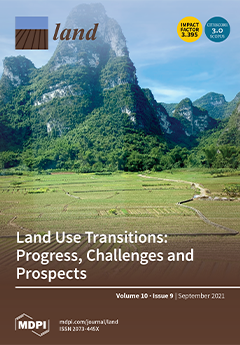Methane (CH
4) is one of the three most important greenhouse gases. To date, observations of ecosystem-scale methane (CH
4) fluxes in forests are currently lacking in the global CH
4 budget. The environmental factors controlling CH
4 flux dynamics remain
[...] Read more.
Methane (CH
4) is one of the three most important greenhouse gases. To date, observations of ecosystem-scale methane (CH
4) fluxes in forests are currently lacking in the global CH
4 budget. The environmental factors controlling CH
4 flux dynamics remain poorly understood at the ecosystem scale. In this study, we used a state-of-the-art eddy covariance technique to continuously measure the CH
4 flux from 2016 to 2018 in a subtropical forest of Zhejiang Province in China, quantify the annual CH
4 budget and investigate its control factors. We found that the total annual CH
4 budget was 1.15 ± 0.28~4.79 ± 0.49 g CH
4 m
−2 year
−1 for 2017–2018. The daily CH
4 flux reached an emission peak of 0.145 g m
−2 d
−1 during winter and an uptake peak of −0.142 g m
−2 d
−1 in summer. During the whole study period, the studied forest region acted as a CH
4 source (78.65%) during winter and a sink (21.35%) in summer. Soil temperature had a negative relationship (
p < 0.01; R
2 = 0.344) with CH
4 flux but had a positive relationship with soil moisture (
p < 0.01; R
2 = 0.348). Our results showed that soil temperature and moisture were the most important factors controlling the ecosystem-scale CH
4 flux dynamics of subtropical forests in the Tianmu Mountain Nature Reserve in Zhejiang Province, China. Subtropical forest ecosystems in China acted as a net source of methane emissions from 2016 to 2018, providing positive feedback to global climate warming.
Full article





